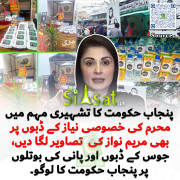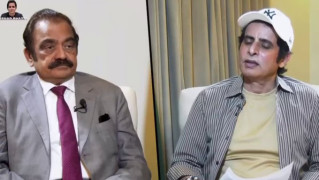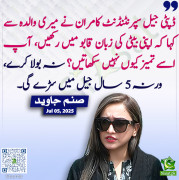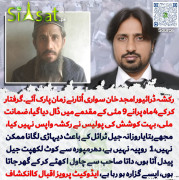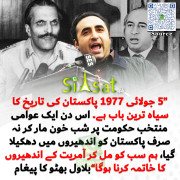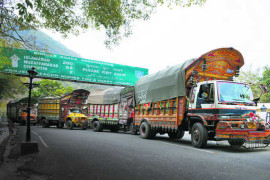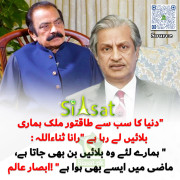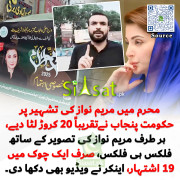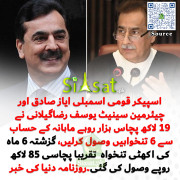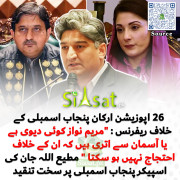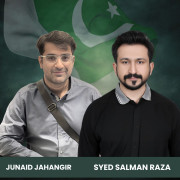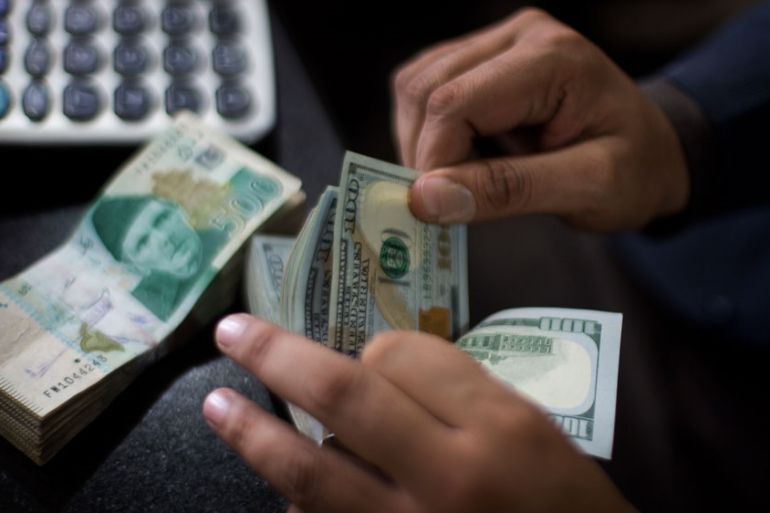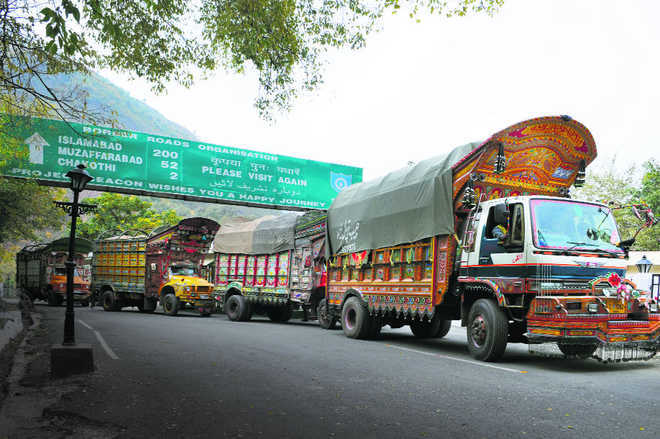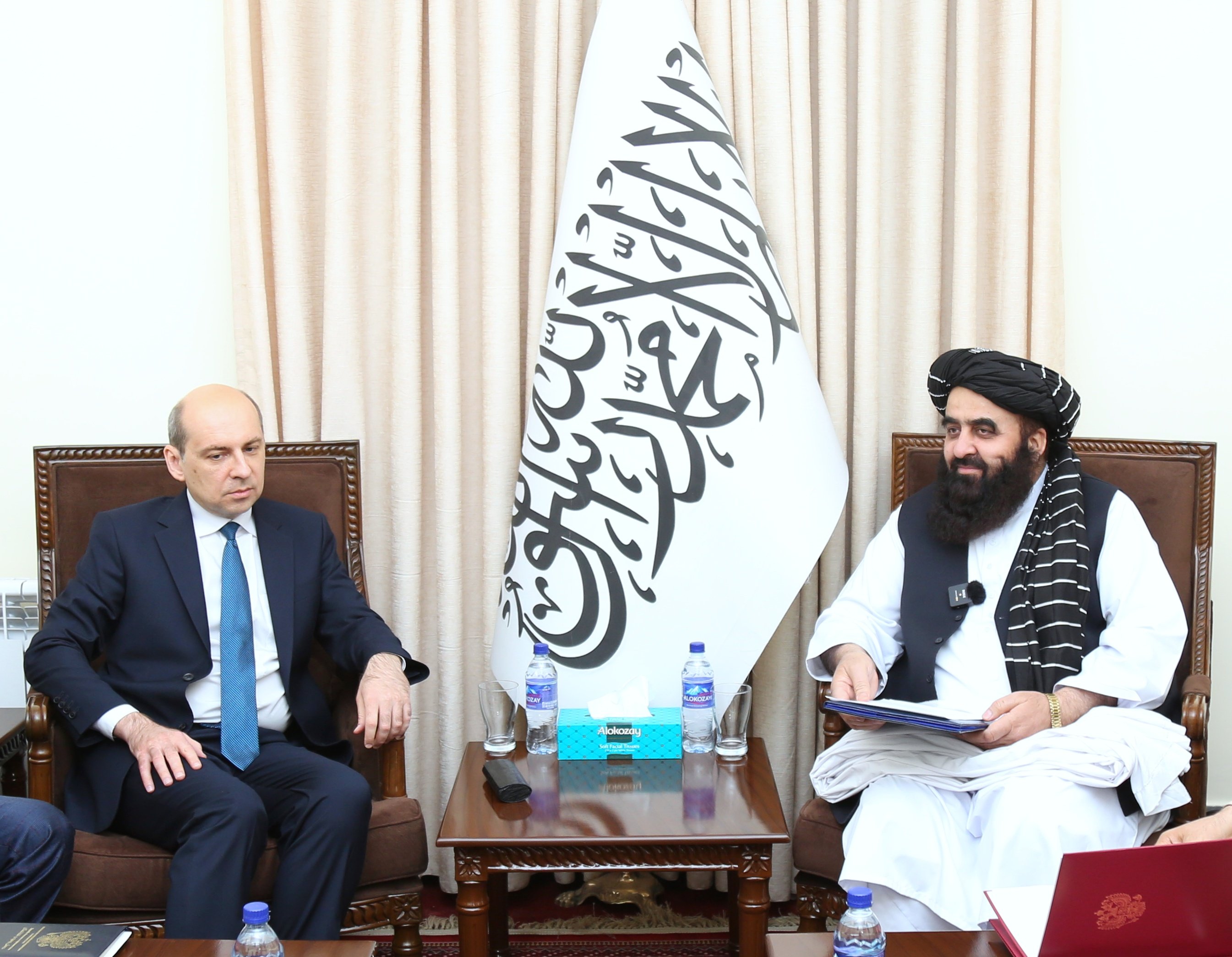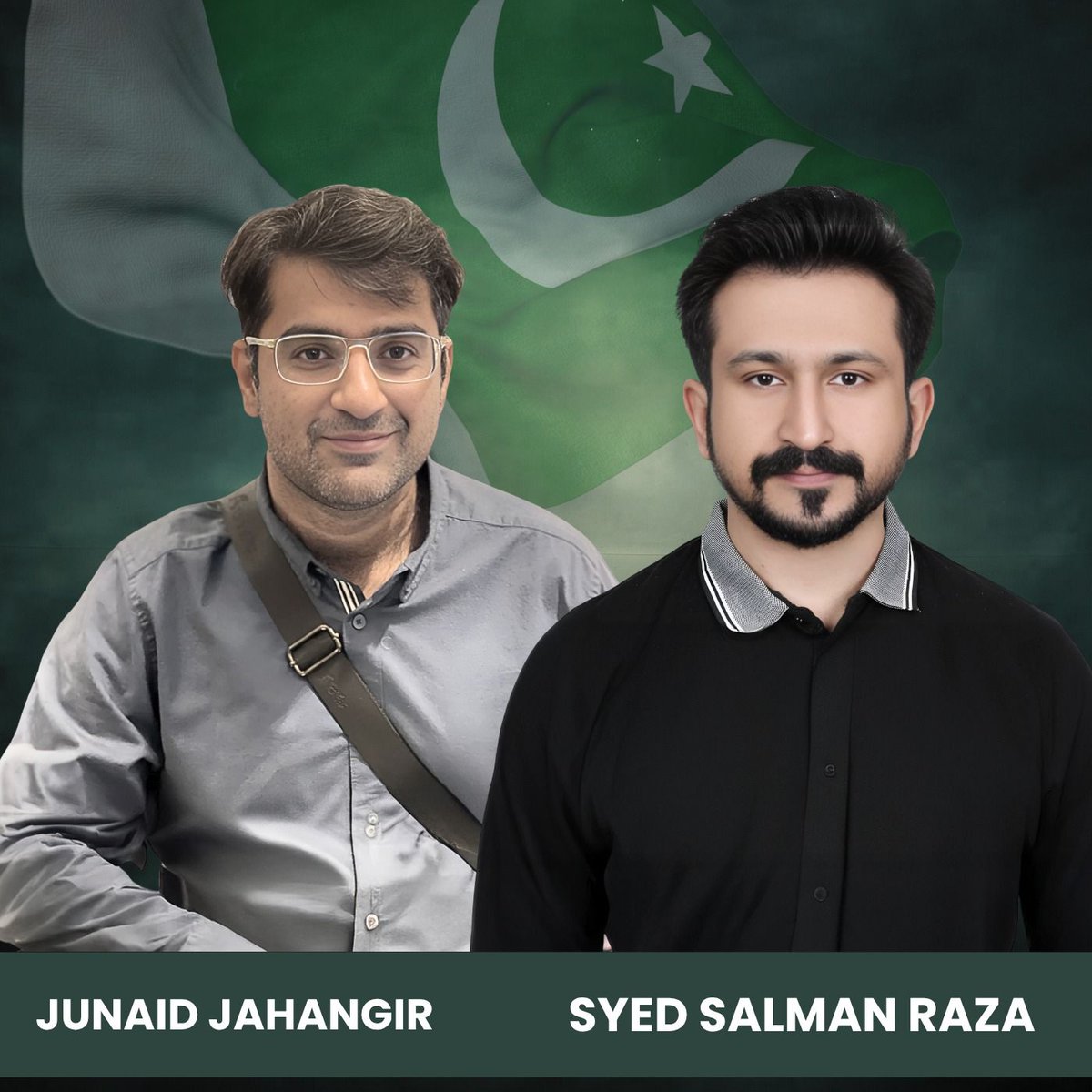3. Religious Violence
Religion-related violence has been widespread in Pakistan since Independence. 96.28% of the Pakistani population are Muslims, 1.85% Hindus, 1.59% Christians, and 0.22% Ahmadis (Government of Pakistan, Statistics Division, No. SD. PER.E (53)/99-449, Islamabad, 16 July 2001). Religious violence can be divided into two kinds of violence: one directed against religious minorities such as Ahmadis, Christians and Hindus, and one between Islamic sects, especially between Sunnis (75-80%) and Shias (15-20%) but also within Sunnis sects as well. In fact, the violence against Ahmadis could be conceived as sectarian violence as they were originally considered as an Islamic sect. However, the main reason for the violence against them was that they were not considered as Muslims by Muslim orthodox, and they were later declared a non-Muslim minority. Then, the violence between Sunnis and Shias could also be interpreted as violence against a religious minority since Shias were first targeted by Sunni militant groups. Most of those killed in sectarian violence, around 70%, were Shias (ICG, 2005: 4). However, the subsequent level of militarization and retaliation by Shia militant groups is significant and necessitates distinguishing sectarian violence from violence against religious minorities who have never been able to retaliate.
3.1. Anti-Religious minorities Violence
3.1.1. The Anti-Ahmadi Movement and Riots
Ahmadis, also known as
Qadiyanis or
Mirza’is, belong to an Islamic sect founded in the mid-19th century by Mirza Ghulam Ahmad in Qadian, Sialkot district of Punjab, now in India, and are approximately two million. At Partition, they moved to Pakistan and most of them settled in Rabwah and around, in West Punjab. The main cause of controversy is that Ahmadis believed that Muhammad’s revelation could be completed and perfected by their founder’s interpretations, hence disregarding a fundamental pillar of Islam that is the end of the prophethood with Muhammad. They were thus considered as heretics by Muslim orthodox, who have continuously asked for them to be declared non-Muslims. Moreover, the general welfare of the Ahmadis, secured mainly due to their pro-British stance before Independence, was also a reason for the hatred they faced. Religious parties have constantly demanded the removal of the Ahmadis in post in the administration and the government, especially Zafaru’llah Khan, the Pakistani foreign minister.
The Islamization process undertaken during
General Zia ul-Haq rule proved to be critical for the Ahmadis. The climax was reached in the early months of 1984 when the Ahmadis were then forbidden to pray openly, to spread their beliefs and to call Azan or use any Islamic expressions. It took place through the Anti-Ahmadi Ordinance XX that added Sections 298-B and 298-C in the Pakistan criminal code. Then, in 1986, the Blasphemy law, PPC 295-C, was passed. It prohibits Ahmadis from calling themselves Muslims or posing as Muslims, from referring to their faith as Islam, from preaching or, propagating their faith, from using words and salutations from the Holy Quran and from injuring the religious feelings of Muslims. Any transgression of this law results in a death sentence for the offender.
Since its promulgation, this law has been widely used in order to oppress the Ahmadi community. Generally, Ahmadis faced minor acts of violence such as killings, arson, destruction and desecration of mosques, internment on false grounds, torture, and social and economic boycott (as documented in the annual reports of the Human Rights Commission of Pakistan (HRCP) since its inception in 1986). From 1987 to 2004 included, 4,000 people were accused under the Blasphemy law and 560 formally charged mostly Ahmadis and Christians (ICG, 2005: 26).As soon as 1949, in the context of the release of the Objectives Resolution, the Majlis-I Ahrar-I Islam (Society of Free Muslims), a populist Islamic party created in 1930 and led by Taju’ddin Ansari, and the Majlis-e Khatlme Nabuwwat (Society for the finality of prophethood), launched an anti-Ahmadi agitation in order to test the professed loyalty to Islam of the government. In May 1951, the Ahrar used the West Punjab elections as a platform for their anti-Ahmadi propaganda. They found a strong support in the new Chief Minister of Punjab and leader of the Punjab Muslim League,
Main Mumtaz Daultana, who was eager to raise support among the religious electorate, hence allowing the Ahrar to pursue their anti-Ahmadi agitation. A first riot was launched by the Ahrar following Zafaru’llah Khan’s speech at an Ahmadi public session in Karachi on May 17, 1952. The Ahrar’s anti-Ahmadi agitation was later joined, albeit reluctantly, by the Jamaat-i-Islami, another religious party led by Mawdudi. The anti-Ahmadi agitation climaxed in March, 1953, when riots broke out throughout Punjab. Later, in May 1974, another round of riots broke out in Rabwah. Following this incident, 18 religious groups renewed their demand for declaring Ahmadis non-Muslims which was finally granted by
Prime Minister Zulfikar Ali Bhutto in September 1974.
1953; March, The Punjab Disturbances: The anti-Ahmadi movement strengthened over the years and turned violent, resulting in riots, first in Karachi on February 27, 1953, following the rejection by the Pakistan government of the All-Parties Muslim Convention’s demand that the Ahmadis should be treated non-Muslims, then, more dramatically, in Punjab, particularly in Lahore which became “the scene of a vast hunt where thousands of citizens rioted murderously... in almost pogrom-like fashion” (The Munir Report, 1954: 35). The Army had to intervene to restore law and order in the province and martial law was imposed on March 5. Firing by police that day left 10 people dead and 74 injured, and there were 11 more casualties before the situation got stabilized (Irfani, 2004: 153). On the whole, more than 300 people died in the riots (James, 1993: 14). The root cause for these riots was political opportunism by religious parties, especially the Majlis-e-Ahrar and other like-minded groups of Ulemas such as the Jamaat-i-Islami (Horowitz, 2001: 213-214; Kennedy, 1989: 87). Moreover, the administrative incompetence and collusion of Punjab government allowed the situation to degenerate (The Munir Report, 1954: 9-10). ** (The Munir Report, 1954;Kennedy, 1989;James, 1993; Horowitz, 2001; Irfani, 2004)
1974; May 22-29, The Rabwah incident: The controversy has resurfaced in 1974 under
Bhutto’s regime and again turned violent with the Rabwah incident. On May 22, a train full of students from Nishtar Medical College passed through Rabwah, the headquarters of the Ahmadis, shouting insulting slogans. A week later, when the students came on their way back, a mob of Ahmadis were waiting for them with light arms. Ahmadis beat up the students but no casualties happened. Then, violence spread from Rabwah to the whole province of Punjab. During the riot, 42 persons died, 27 of who were Ahmadis. **(Kennedy, 1989: 90).
3.1.2 The Persecutions against Christians
The tiny Christian minority settled in Pakistan also suffered from recurrent and severe discrimination and harassment. They regularly suffer from killings, arson, desecration and destruction of churches, seizure of land and properties, forced conversions, rape, etc. These acts of violence against the Pakistani Christian community have only been systematically and precisely documented since the publication of the HRCP annual report in 1992 onwards. The Christians as well as the Ahmadis were frequently targeted through the drastic Blasphemy laws.
However, since the terrorist attacks of September 11, 2001, and the subsequent American military intervention in Afghanistan, Christians have become the target of several major acts of violence such as gun firing, grenade launching, and bombing, sometimes by suicide bombers, on churches or other locations. The anti-Christian militant violence peaked in 2002 but then gradually receded to the kind of isolated acts of violence the Christians were used to face before the end of 2001.
2001; October 28: Eighteen Christians were gunned down when six assailants opened fire inside the St. Dominic Church at Bahalwalpur. The dead included women and small children and at least a dozen other worshippers were seriously injured. The attack was allegedly linked to the US action against the Taliban in Afghanistan, which had begun a few weeks earlier (HRCP, 2001: 156).
2002; March 17: Four grenades were thrown inside a church located in Islamabad’s heavily protected diplomatic enclave. Only two of the grenades exploded, killing five people and causing injury to over forty, many from among the diplomatic community. *** (HRCP, 2002: 166).
2002; May 8: A suicide bomber rammed a car full of explosive into a Pakistan Navy bus, as it was leaving the Sheraton Hotel in Karachi. Fourteen people were killed, among whom eleven French naval engineers, who were working on a submarine project with the Pakistan Navy. According to the HRCP, the French nationals were the main target. *** (HRCP, 2002: 166).
2002; June 14: A suicide car-bomb attack on the US Consulate in Karachi killed 12 persons, all of them Pakistanis and none of them Christians. The targeting of the US Consulate is nonetheless seen as a part of the continuing militant action directed against Western and Christian targets.
3.1.3. The Anti-Hindu Pogroms
The situation of the Hindu minority, particularly concentrated in East Pakistan (now Bangladesh) was tensed since Independence. They generally lived the life of second-class citizens and were occasionally targeted in major pogroms. The first case of mass violence against Hindus occurred in East Pakistan at the beginning of 1950. It was started by the spread of false rumors, somewhat encouraged by the official media, and degenerated into retaliatory violence between West and East Bengal.
Then, a new pogrom occurred in 1964 again in East Pakistan allegedly due to the loss of Prophet Mohammad’s hair from the Hazratbal mosque in Kashmir, India. There was however also a strong economic incentive as the attacks were originally directed toward the Hindu-owned cotton mills located nearby non-Bengali Muslim, mostly Bihari, factories. In 1971, during the civil war between the Pakistani army and the Bengali
Mukti Bahini, the former organized massacres against the Hindus in East Pakistan as it was documented in the previous section dealing with the East Pakistan civil war.
Since the break-up of Pakistan and the creation of Bangladesh, the Hindu community, which remained in Pakistan, most of them concentrated in small pockets in Baluchistan and Sindh, though not suffering from acts of mass violence, has been constantly discriminated and harassed as it was the case with Ahmadis. These acts of violence against Hindus in Pakistan have been systematically and precisely detailed in the successive annual reports of the HRCP since 1992.
The Great Anti-Hindu Pogrom of 1950
1950; January: A clash broke out between Communists and the police in the Kalshira village of the Bagerhat area of Khulna district during which some policemen were killed. The police then retaliated by destroying some houses in the village some of which belonged to Hindus. The latter decided to migrate to India and spread a rumor of atrocities on Hindus, which was relayed by the West Bengal press. This rumor generated attacks on Muslims in West Bengal. In retaliation, Muslims from Kalshira and the neighboring villages began to target Hindus in the area.
1950; February: Atrocities against Hindus went on especially in Dhaka and Khulna from the second week of February. These atrocities mainly took the shape of murder, arson and forcible conversion. Violence then spread to the coastal district of Barisal where five to seven thousand Hindus were said to be killed. *(Roy, 2007: 202).
1950; February 12, The Meghna Bridge Massacre: The Meghna Bridge, also known as the Bhairab Bridge and the Anderson Bridge, is a one-kilometer long bridge, which spans the wide Meghna river between Bhairab Bazar Junction on the Dhaka-Mymensingh eastern line and Ashganj near Brahmanbaria. Assailants boarded both sides of the train just before it got on the bridge and blocked the doors. They then stopped the train once it was fully on the bridge. Finally, they methodically picked out all the Hindus that were on the train and systematically killed them. *(Roy, 2007: 211).
The Hazratbal-inspired Anti-Hindu Pogrom, 1964
1964; January 3: A protest day was observed following the loss of Prophet Mohammad’s hair from Hazratbal Mosque in Kashmir, India. On that day, at Daulatpur, Khulna district, Sabdul Khan made an inflammatory speech to a crowd of non-Bengali, mostly Bihari, Muslim factory workers, who immediately thereafter took out a procession, looted and set fire to Hindu houses, raped women and killed them indiscriminately without any interference from the police.
1964; January 13 to 17: The anti-Hindu attacks of January 3 generated retaliatory attacks on Muslims in West Bengal. In spite of the fact that the Indian army quickly quelled the riot, it was subsequently used as an excuse for further violence against Hindus in East Pakistan. The violence was particularly gruesome in the Adamji Mill area of Narayangunge, Nishat Mill area of Tongi, north of Dhaka, and the Mohammedpur colony of Tezgaon, Dhaka city and the Nawabpur area of old Dhaka. The common thread among them is that they were dominated by non-Bengali Muslim workers of non-Bengali-Muslim-owned factories. Following a meeting with the Chief Secretary of East Pakistan on January 13, the owners of these factories decided to declare January 14 and 15 as holidays. They supplied their workers with motor vehicles, iron rods, daggers, firearms, petrol cans and sprayers and summoned them to attack the Hindus in their area. There was an obvious economic incentive for this pogrom as the Muslim workers started to attack the Hindu-owned factories of Dhakeswari Cotton Mill, Chittaranjan Cotton Mill and Laxminarayan Cotton Mill. Their Hindu workers were killed indiscriminately and the factories were set ablaze. The Muslim rioters then turned to the village of Golkandayal where many Hindus had gathered for a fair at the occasion of the Hindu festival of
Makar Sankranti. In Dhaka, at the same time, arson, loot and rampage occurred without any initiative from the government to prevent it till January 16. **(Roy, 2007: 271-74).
3.2. Sectarian Violence
3.2.1. Sunni/Shia Violence
Sectarian violence is amongst the most lethal in Pakistan since the mid-eighties. It opposes mostly
Sunnis and
Shias. Actually, it would be more accurate to describe this conflict as a
Deobandi-Shia conflict since the former somehow appropriated the term Sunni for themselves and is supported in its anti-Shia struggle by
Ahle Hadit organizations. Between 1985 and 1989, over 300 Shias were killed in sectarian incidents in Jhang district, Southern Punjab, the birthplace of organized sectarian militancy, the two sub-sects now living in separate parts of the city (ICG, 2005: 14).
Then, between 1989 and 2003 (July 6), 1,468 persons were killed and 3,370 injured in some 1,813 sectarian incidents (Lakshman, 2003: 1). Till the mid-nineties, most of the killings remained concentrated in Punjab. 700 people were killed in this province alone between 1989 and 2001 (Zaman, 1998: 712; Abbas, 2001: 24). But then, sectarian violence spread to the whole of Pakistan, first in the Northern Areas and the North West Frontier Province (NWFP), then in Sindh, causing 1850 dead in total (Abbas, 2001: 24). In Karachi alone, 293 people died between 1994 and June 2002, of whom approximately 200 were Shias (HRCP, 2002: 7). The sectarian violence peaked in Karachi in 1994-95 as 103 Shias and 28 Sunnis died during this period (ibid.).
Among those that have gained prominence are the
Sipah-i Muhammad Pakistan (SMP; the Army of Muhammad), an off-shoot created in 1991 of the
Tehreek-Nifaz-i-Fiqh-e-Jafaria (TNFJ) the main politico-religious Shia party in Pakistan, later renamed
Tehreek-e-Jafaria Pakistan (TJP) formed in 1979; and on the Sunni side the
Anjuman Sipah-i Sahaba, later renamed
Sipah-i Sahaba Pakistan (SSP; the Sunni Pakistan’s Army of the Prophet’s Companions) established in Jhang in 1985 by
Maulana Haq Nawaz Jhangvi, an off-shot of the
Jamiat-e-Ulema-e-Islam (JUI), a leading politico-religious Sunni Deobandi party. A further militant off-shot of the SSP is the even more violent
Lashkar-e-Jhangvi (The Army of Jhangvi), formed in 1990. Two other prominent militant Sunni Deobandi outfit are
Tehrik Nifaz Shariat-I Muhammadi (TNSM; Movement for Protection of Muhammad’s Religious Law) created in 1994, and the
Lashkar-e-Taiba (The Army of the Pure) formed in 1997-1998.
The present state of organized sectarian conflict can be traced to the murder of TNJF leader Arif Hussain Al-Hussaini in 1988. Others date it to 1987 when Ahl-e-Hadith leaders, Allama Ehsan Elahi Zaheer and Maulana Habib ur Rehman Yazdani, were killed, along with six others, at a meeting in Lahore.
From 1985 to 1995, the dominant pattern of sectarian violence was targeted killings of leaders and militants of each other’s sects. The spiral of violence registered a sharp rise in February 1990 with the murder of
Maulana Haq Nawaz Jhangvi, founder of the SSP. This led to violent clashes resulting in dozens of casualties and burning down of many houses and shops in Jhang. Then, by the mid-nineties, the pattern of sectarian violence shifted to targeted attacks on religious gatherings and mosques, even with hand grenades and time bombs. At that time, office bearers and government officials also became targeted. Since 1997, a new feature of sectarian violence appeared with indiscriminate gunfire on ordinary citizens not involved in sectarian activity, and tit-for-tat killings targeting doctors, lawyers and traders (Abou-Zahab, 2002: 78). Finally, in the post September 11, 2001 context, suicide bombing tends to become the dominant pattern of sectarian violence.
Several regional and international dynamics (Abou-Zahab, 2002: 115-128; Nasr, 2000: 171-190), such as the Iranian Revolution in 1979, the Soviet invasion of Afghanistan between 1979 and 1988, the Iran-Iraq war between 1980 and 1988, and Jihad in Kashmir since 1989, contributed indirectly to exacerbate the sectarian tensions in Pakistan and to radicalize the members of these sects. Furthermore, the direct financial support of Saudi Arabia and Irak to Pakistani Sunni organizations and of Iran to Pakistani Shia organizations allowed them to build a wide network of madressahs and to buy arms.
Some parallel domestic dynamics also contributed to the rise of sectarian violence. The main domestic reasons for the escalation of violence between Shias and Sunnis are, from a national point of view, the policy of islamization undertaken by
General Zia Ul-Haq, which alienated the Shia community. The emergence of sectarian politics linked to factionalism within religious parties and militant organizations must also be pointed out as it radicalized the tensions between Shias and Sunnis. The multiplication of madressahs (it is believed that there are currently between 10,000 and 15,000 madressahs in Pakistan, their number increasing between 10 and 15 times during the last two decades, with an enrolment of about 200,00 students) must also be taken into account. Though it does not explain the rise of sectarian violence as such and despite the fact that they often despise the other sects, at least a 100 of them provide military training, which constituted important grounds of recruitment for the militantorganizations (HRCP, 2002: 12-14).
Besides, the crosscutting dynamics of ethnic, sectarian and criminal (drugs and arms) violence exacerbated an unstable situation. The spread of the so-called “drug and Kalashnikov culture” in Pakistan made drug money (especially from the culture of opium and heroin) and arms (it is said that there are approximately 20 million illegal weapons in the country) easily available (Samad, 2007: 173-77). Finally, local dynamics must not be undermined. Local politics that is the political rivalry and socio-economic competition at the local level are important incentives for sectarian conflicts (Abou-Zahab, 2004). For instance, the sectarian conflict in Jhang can be interpreted as the outcome of a struggle for political power between the traditional feudal families who are primarily feudal families and rural-based and the emergent middle class which is largely Deobandi or Ahl-i-Hadith and urban-based (Abou-Zahab, 2004: 136). In this local context, anti-Shia rhetoric proved to be a useful instrument of mobilization towards other ends.
While episodic violence between Shias and Sunnis was a recurrent phenomenonin South Asia, especially during Muharram-Ashura processions, even before Partition, it has become increasingly frequent and violent in Pakistan since the mid-eighties. One significant exception was the killing of more than 100 Shias in the Tehri village of the Khairpur district, Sindh, in June 1963 (ICG, 2005: 9). Pakistan is currently experiencing a full-scale sectarian conflict, which began in the mid-eighties, spreading throughout the country from Punjab to Northern areas and NWFP to Sindh and Baluchistan.
1988; May 17, The Gilgit Massacre: In Gilgit, the main city of the Northern Areas of Pakistan, a predominantly Shia and Ismaeli area, Sunnis, who were still fasting, attacked Shias while celebrating
Eid ul-Fitr, in the wake of a theological quarrel between Shias and Sunnis over the starting date of Ramadan. Official sources said 200 people were killed but it was closer to 800 according to unofficial estimates (Aase, 1999: 60; ICG, 2005: 19), in a raid on the city by Sunni activists, mostly from North West Frontier Province (NWFP) tribal areas. These were assisted by local Sunnis from Chilas, Darel and Tangir, with the compliance of the Central government, which intended to build a Sunni mosque in the center of the city and ultimately to alter the demographic balance in favor of Shias in Gilgit and the rest of the Northern Areas. *** (Aase, 1999; ICG, 2005).
1992; July: A three-day riot occurred in the NWFP, particularly in Peshawar,between Shias and Sunnis. It caused the death of seven Sunnis and three Shias, and 49 people were injured. *** (Haleem, 2003: 469).
1996; September: A sectarian clash turned in a nine-day communal “war”, following an incident of wall chalking by sectarian students, involving mortars, rocket launchers and anti-aircraft missiles, between Sunni Orakzai and Shia Bangash tribe in Parachinar, the capital of Kurram Agency of the Federally-Administrated Tribal Areas (FATA). It caused the death of more than 200 people (Nasr, 2002: 85; ICG, 2005: 18). This event set up the “Parachinar paradigm of sectarian violence”, dominant in the Tribal areas and marked by the use of heavy weapons by both sides, support of Afghan settlers and Taliban for local Sunnis, and the deployment of the army for restoring order. ***(Nasr, 2002; ICG, 2005).
1997; August 1-10: More than 100 people, mostly Shias, died in sectarian riots during ten days throughout Punjab in an unprecedented wave of sectarian strife, a few days before the anniversary of 50th year of Independence. *** (ICG, 2005: 13).
1998; January 11, The Mominpura Graveyard Massacre: Twenty-five Shias were killed and 50 others injured in Lahore when three gunmen, allegedly from the
Lashkar-e-Jhangvi, fired upon a crowd gathered, as every Sunday, in the Mominpura cemetery for
Qurankhwani (Quranic recitals) and
Majlis rituals. This event propelled a new wave of sectarian violence resulting in 78 dead and some 80 injured in Punjab, and an estimated 150 in all of Pakistan. *** (Nasr, 2002: 86).
1998; March: Twenty-one Shias were killed in Hangu, NWFP, during an attack by Sunni militant organizations. *** (Abou-Zahab, 2002: 124).
1999; January: Seventeen Shias were killed in Karamdad Qureshi, a small village near Multan. Punjab. *** (Abou-Zahab, 2002: 119).
2002; February 26: The attack on the Shah Najaf mosque in Rawalpindi resulted in the death of 11 people and over 19 wounded when three militants opened indiscriminate fire on worshippers.
2003; July 4, The Jama Masjid-o-Imambargah Massacre: Some 53 people were killed and 57 injured when two men opened fire and one blew himself up in a Shia mosque, the Jama Masjid-o-Imambargah Kalaan Isna Ashri in Quetta, capital of Baluchistan, during the Friday prayers. *** (Lakshman, 2003: 1; HRCP, 2003: 101).
2004; March 2: On the day of Ashura, SSP activists in connivance with police officers attacked a procession of Shias, killing 47 of them (especially from the anti-Taliban Shia Hazara community) and injuring 150 others, at Liaquat Bazaar in Quetta. *** (ICG, 2005: 21, 24).
2004; May 7 and 31: Two suicide bombings, both executed by members of LeJ, respectively on the Shia Hyderi Masjid on May 7 in Karachi and at Imambargah Ali Raza also in Karachi on May 31, killed 47 people. *** (ICG, 2005: 24).
2004; October 1 and 7: Two bomb blasts killed at least 71 people and injured 200 others in Punjab at a Shia mosque at Sialkot during the Friday prayers and at a large gathering assembled to mark the first anniversary of the killing of Sunni leader and SSP chief Maulana Azim Tariq in Multan. *** (SATP, 2007).
2005; May 27: Bari Imam Shrine Blast: Around 25 people died in a suicide bomb attack and over 100 others were injured during a crowed Majlis, where Barelvi Sunnis were also present at the Bari Imam shrine of the Shia sect located in the vicinity of the diplomatic enclave in Islamabad. *** (SATP, 2007).
2005; March 19: At least 50 people were killed and approximately 100 others suffered injuries during a bomb explosion at a crowded gathering near the shrine of a Shia saint at Fatehpur village in the Jhal Magsi district of Baluchistan. *** (SATP, 2007).
2007; April 6-11: Around 55 people were killed during sectarian clashes in the Kurram Agency of FATA as Shia and Sunni militants attacked each other’s village with heavy weapons. The violence broke out when Shias were attacked in an Imambargah in the morning while they were staging a demonstration outside their mosque against local Sunnis who allegedly chanted anti-Shias slogans during a religious rally the week before. *** (SATP, 2007).
2007; November 16-20: Sectarian violence in Parachinar, the capital of Kurram agency, FATA, erupted after unidentified people hurled a hand-grenade at the central mosque in the town, where hundreds of Sunnis were offering Friday prayers. State-run television has put the number of deaths in the violence to 91, and has reported that another 150 people have been injured. *** (SATP, 2007).
2007; December 22-27: The alleged incursion of Taliban fighters in the Kurram Agency of FATA in order to back Sunni militant organizations flared up sectarian clashes between rival Sunni and Shia groups resulting in at least 70 dead and several injured. *** (SATP, 2007).
3.2.2. Intra-Sunni Violence
Not only is there violence between Sunnis and Shias but there is also numerous intra-Sunni conflicts, especially between the
Barelvis and the
Deobandis. Sunnis in Pakistan can be broadly divided into four categories:
Deobandis,
Barelvis,
Ahle Hadit, and revivalist, modernist movements. The first two Sunni sub-sects are products of 19th century Indo-Muslim reform movements that emerged from religious seminaries, one located at Deoband in 1867, and the other at Bareilly in 1897, both now in India.
Although they both follow the
Hanafi school of Sunni Jurisprudence, their interpretations of it radically differ. The main controversy between them deals with the
Barelvis’ promotion of the
Sufi Islamic tradition of hereditary saints and shrine culture which is rejected by
Deobandis who dismiss these practices as idolatry and favor a strict adherence to the classical texts of Islam. The third category is a small, ultra-orthodox and puritanical sect inspired by the purist
Wahabi tradition originating from Saudi Arabia. The latter group is composed of modernist movements, which emerged during the 1940s such as the
Jamaat-i-Islami (JI).
The main intra-Sunni conflict is the one opposing
Deobandis and
Barelvis, the two main Sunni sub-sects.The situation deteriorated into large scale violence when the major Barelvi sectarian outfit, the Sunni Tehreek (ST), an off-shot of the Jamaat—Ulema Pakistan (JUP), was created by Mohammad Saleem Qadri in 1990, with its stronghold and headquarters in Karachi, to counter the increasing hegemony of Ahle Hadees and Deobandi organizations over the Pakistani government. The pattern of intra-Sunni violence follows more or the less the same evolution as described in the case of sectarian violence. Beginning by aggressive occupation of mosques, it then moved to targeted killings of the organizations’ respective leaders (Saleem Qadri was hence assassinated in 2001) to finally suicide bombing as in the case of the Nishtar Park bombing in Karachi in 2006.
Initially, the ST essentially targeted the Sipah-i-Sahaba and the Lashkar-e-Taiba. From 1990 to 2002, it especially resorted to aggressive occupation of mosques in Sindh and Punjab that were thought to have been taken over from their control by Ahle Hadit and Deobandi organizations (Rana, 2006: 374-75). It would have lost approximately 30 militants in these operations since 1990 (Shahid Gauri quoted in Boivin and Gayer, 2007: 52).
Since 2002, a few months after the targeted assassination of its leader and founder Saleem Qadri on May 18, 2001, the Sunni Tehreek entered politics. This politization of the Sunni Tehreek propelled a conflict with the MQM, the major political party in Karachi, though it is said that an agreement was reached between the two in 1995 when the federal State cracked down MQM’s militants according to which these latter were offered protection in the ranks of the Sunni Tehreek. Between 2004 and 2006, the Sunni Tehreek said it lost 75 militants and accused the MQM for most of them (ibid.: 52). Sunni Tehreek’s militants mostly suffered from targeted killings but violence climaxed during the Nishtar Park Bombing on April 11, 2006, when the entire leadership of the organization died (SATP, 2007).
2006; April 11, The Nishtar Park Bombing: At least 57 people, including prominent clerics, among whom the top leadership of the Sunni Tehreek and the Jamaat Ahl-e Sunnat, were killed and more than 200 people sustained injuries in a suicide bomb attack at Nishtar Park in Karachi. It is believed members of the Sunni Tehreek were outwardly targeted. However, it remains unclear whether the bombing should be attributed to Deobandi organizations or the MQM. ** (SATP, 2007).




